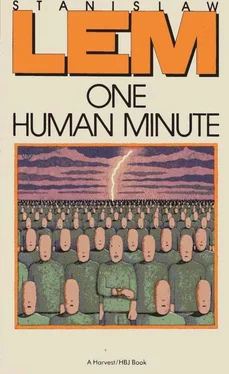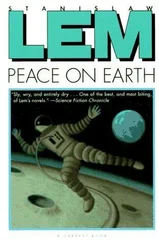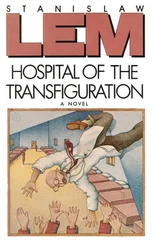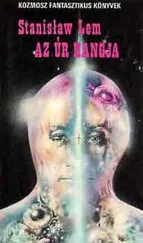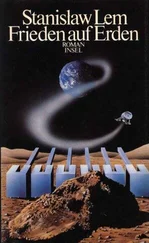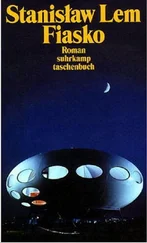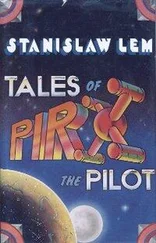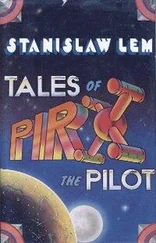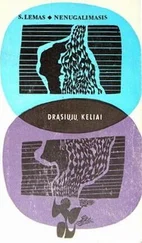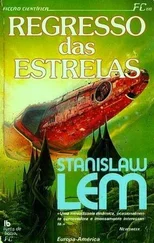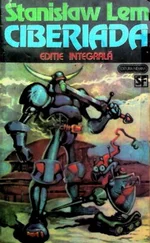The crater-pocked surfaces of all the moons in our planetary system are like photographs of the past, a frozen picture of the beginning of this system, which was also created out of destruction. All the bodies orbited the young Sun in frequently intersecting paths, and collisions resulted. Thanks to these catastrophes, the large bodies — the planets — increased in mass, while the bodies of small mass, in colliding with the planets, “vanished” from the system. I said earlier that about 4.6 billion years ago the Sun and its planetary family left the stormy region of the galactic spiral and moved off into calm space. But this does not mean that the interior of the solar system was then calm. Collisions of planets with meteorites and comets were still going on when life began on Earth. Moreover, leaving the spiral arm was not like walking out of a house; radiation and stars do not suddenly cease to exist at any one point. During the first billion years of its existence, the Earth was still continually exposed to shocks, though the supernovas were distant enough not to devastate it and turn it into a dead globe. The hard radiation (X rays and gamma rays) coming from space was a factor both creative and destructive, since it accelerated the rate of mutation in the proto-organisms.
Some insects are a hundred times less vulnerable to the lethal effect of radioactivity than vertebrates. This is really very strange when you consider that the hereditary substance of all living systems is basically the same. They differ from one another in the way buildings of various cultures, epochs, and architectural styles differ; the building material — brick and stone — is the same everywhere, as is the mortar that keeps the whole together.
The difference in vulnerability to lethal radiation must have been caused by events extremely distant in time, by catastrophes in the era when the first insects (or, rather, their ancestors) came into being, about 430 million years ago. It is not impossible, however, that the “insensitivity” of certain organic forms to radiation fatal to most others developed one billion years ago.
Will the coming century witness a revival of the theory put forth by the early nineteenth-century French paleontologist and anatomist Cuvier, called catastrophism? It saw geological processes, like mountain-formation, climate changes, the rise and disappearance of seas, as violent and sudden transformations — planetary catastrophes. The theory was developed further by Cuvier’s student, d’Orbigny, in the middle of the nineteenth century; according to him, the organic world of the Earth perished and arose anew many times in successive acts of creation.
This union of catastrophism with creationism was laid to rest by Darwin’s theory, but the funeral was premature. Catastrophes on the largest scale, cosmic, are an indispensable condition not only for the evolution of stars but also for the evolution of life. It was the human mind that created the alternative of either “destruction or creation” and that has continued to impose it on the world since the dawn of our history. Man considered the mutual exclusiveness of destruction and creation as self-evident when he faced his own mortality and set it against his will to live. That opposition is the common foundation for all the hundreds of our cultures; one finds it in the most ancient myths, creation legends, and religious beliefs, and in the science that arose a few thousand years later. Faith as well as science endowed the visible world with properties that eliminated blind, incalculable chance as the author of all events. The war of good and evil present in all religions does not always end, in every faith, with the victory of good, but in every one it establishes a clear order of existence. The sacred as well as the profane rest on that universal order. Thus, chance, the ultimate arbiter of existence, was not present in any of the beliefs of the past. [3] The word “chance” is not found in any scripture of any faith.
Science, too, long resisted acknowledging the creative and incalculable role of chance in the shaping of reality.
Human beliefs can be divided roughly into those that offer comfort and those that offer order vis-à-vis the given world. The first type promises reward, salvation, a final reckoning of sins and merits, to be crowned in the hereafter with an ultimate justice. To an imperfect world is added a perfect continuation. Most likely such beliefs owe their great longevity, generation after generation, to their property of soothing our complaints against the world. On the other hand, the old myths, instead of offering the peace and promise of a just goodness in a well-run eternity — whatever one may say about paradise and heaven, not a scrap of chance exists there: no one will go to hell as a result of divine error or oversight, and no one will find himself in a posthumous jam because a foul-up prevents him from entering nirvana — the old myths offer an order that is often cruel but necessary. Neither the goodness nor the order resembles a lottery.
Culture exists and has always existed in order to make every accident, every kind of arbitrariness, appear in a benevolent or at least necessary light. The common denominator of all cultures, the source of ritual, of all commandments, of every taboo, is this: for everything there is one and only one measure. Cultures have taken chance in small, careful doses — for fun, as games and amusements. Chance, when domesticated and held in tight rein as a game or lottery, ceases to be dangerous. We play the lottery because we want to; no one forces us.
A believer can see chance in the breaking of a glass or in a wasp sting, but he does not attribute death to chance. In his thoughtless head, Divine Omnipotence and Omniscience seem to assign a subordinate role to accidents. And science, for as long as it could, treated chance as the effect of currently insufficient knowledge, as an ignorance that a future discovery would dispel. These are not jests; Einstein was not joking when he declared that “God does not play dice,” because “He is subtle, but He is not malicious.” This meant: the order of the world is difficult to know, but since it is rational, it is possible to know.
The end of the twentieth century has seen a general turning away from those thousands of years of stubbornly, desperately held beliefs. The destruction-or-creation alternative must finally be rejected. The huge clouds of dark, cold gases circling in the arms of galaxies are slowly undergoing fragmentation into parts as unpredictable as shattered glass. The laws of Nature act not in spite of random events but through them. The statistical fury of the stars, a billion times aborting in order to give birth once to life, a life slain by a chance catastrophe in millions of its species in order to yield intelligence once — this is the rule, not the exception, in the Universe.
Suns form from the destruction of other stars; the remains of protostellar clouds congeal into planets. Life is one of the rare winners in this lottery, and intelligence an even rarer winner in the subsequent draws: it owes its appearance to natural selection — that is, to death, which improves the survivors — and to catastrophes that can abruptly increase the odds for the emergence of intelligent beings.
The link between the structure of the world and the structure of life is no longer doubted, but the Universe is an enormously profligate investor, squandering its initial capital on the roulette wheels that are galaxies. (What brings regularity to the game is the law of large numbers.) Man, shaped by these properties of matter, properties that appeared when the world appeared, turns out to be a rare exception to the rule of destruction: man, the survivor of hecatombs and holocausts. Creation and destruction alternate, overlap, interact, reciprocate, and from them there is no escape or appeal.
Читать дальше
